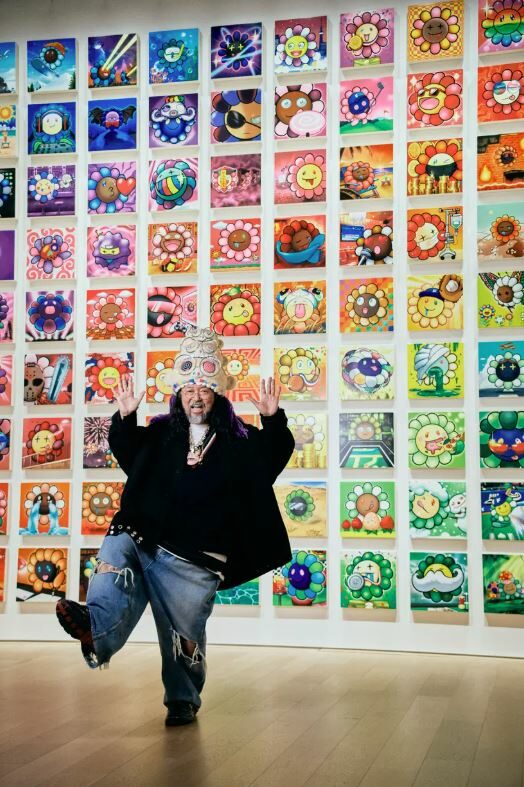Takashi Murakami at the Cleveland Museum of Art: A Fascinating Retrospective of Modern Japanese Art
The Cleveland Museum of Art invites you to explore the fascinating art of Takashi Murakami, where tradition and pop culture meet, in an exhibition that promises to take you on a journey!

Takashi Murakami: Between Tradition and Modernity, an Exploration of Collective Crises Through Art
The exhibition "Stepping on the Tail of a Rainbow" by Takashi Murakami, presented at the Cleveland Museum of Art starting May 25, 2025, offers an immersive experience into the unique world of the Japanese artist. Renowned for his ability to blend traditional Japanese art with elements of modern pop culture, Murakami uses this retrospective to explore how art can respond to collective crises and significant historical events.
Through a series of vibrant works, Murakami examines the repercussions of several major events in Japan's recent history, such as the end of World War II, the 2011 Tōhoku earthquake and tsunami, and the COVID-19 pandemic. The exhibition questions how these collective traumas can inspire art, whether as a form of healing, revolt, or escape. This dialogue between popular culture and Japanese tradition invites visitors to reflect on the lasting effects of these events on both society and the individual.
An Art Where Popular Culture Meets Tradition
The smiling flower characters, references to otaku culture (anime, manga, and video games), and monumental sculptures are characteristic symbols of Murakami's artistic universe. In this exhibition, the artist draws on these influences to address profound questions such as human evolution in the face of collective suffering, the rebirth of creativity after a catastrophe, and the escape offered by art in the context of collectible cards, streetwear trends, and online gaming.
Visitors will thus discover how, after a collective trauma, art can become a form of shared catharsis, but also a way to reconnect with history and traditions while integrating contemporary societal changes.
The Central Element: The Re-Creation of Yumedono, or Hall of Dreams
One of the highlights of the exhibition is the re-creation of Yumedono, or Hall of Dreams, from the Hōryūji Temple in Nara Prefecture, installed in the Ames Family Atrium. This symbolic site is associated with the legend of Prince Shōtoku Taishi, who is said to have healed his father, Emperor Yōmei, through Buddhist prayer, marking the official introduction of Buddhism to Japan in the 6th century.
In the context of the exhibition, Murakami's re-creation of Yumedono reflects on the interconnection between religious culture, spiritual healing, and art. The site houses a statue of Kuse Kannon, a representation of Prince Shōtoku, renowned for its protective and healing powers. By highlighting this sacred space, Murakami emphasizes how, throughout the centuries, art and spirituality have helped people overcome crises and conflicts.
